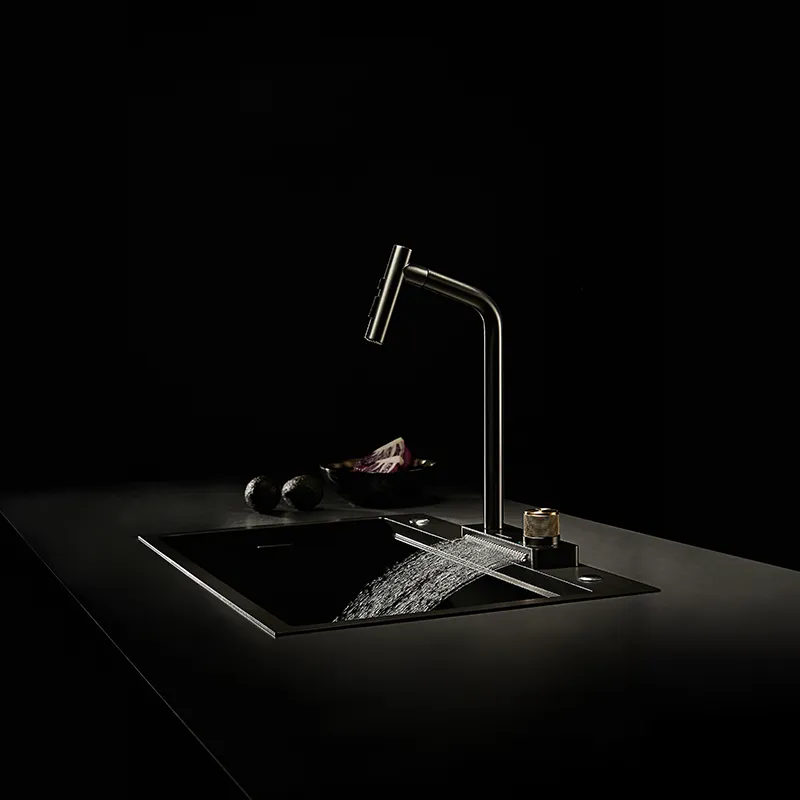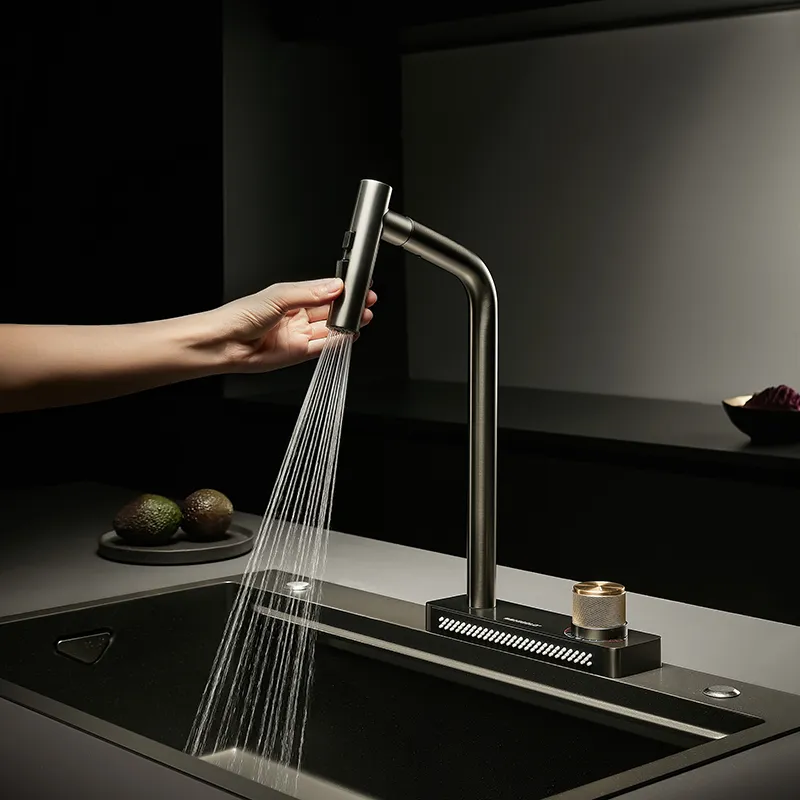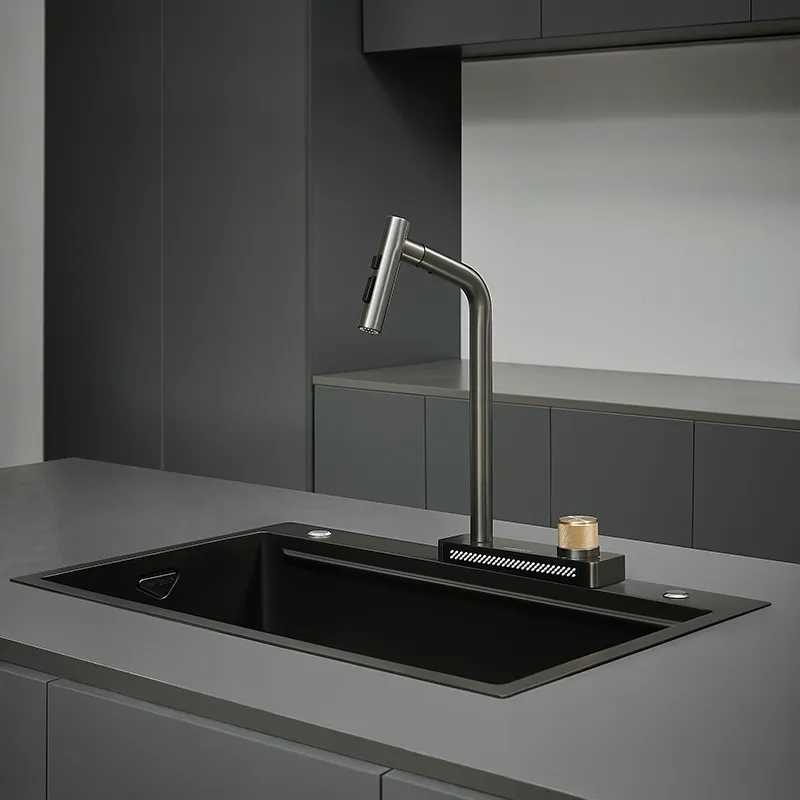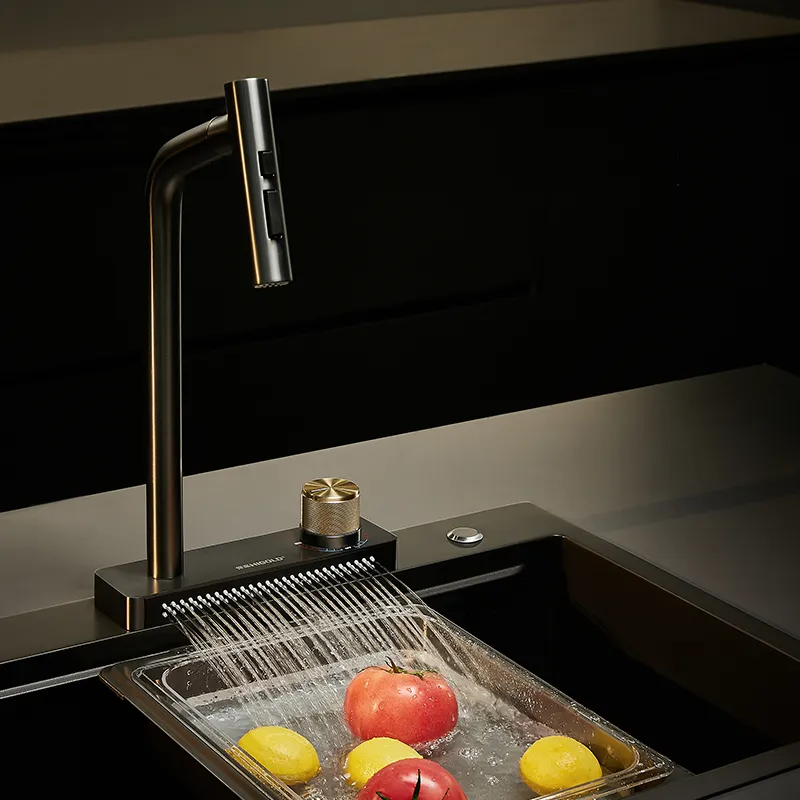The kitchen faucet is one of the essential and important facilities in the kitchen. It is not only related to the daily use of water flow, but also directly affects the overall beauty and convenience of the kitchen. With the improvement of the quality of life, consumers have higher and higher requirements for kitchen faucets. The material, design, function, and installation method of the faucet have become factors that must be considered when choosing.
Among the many brands and styles to choose from, how to choose a kitchen faucet that meets the needs and has high cost performance has become a major problem in many home decorations. This article will introduce in detail several key points that need to be paid attention to when choosing a kitchen faucet, helping consumers make rational decisions in the massive market and choose a kitchen faucet that suits them.

What are the functional requirements of a kitchen faucet?
The primary factor in choosing a kitchen faucet is to determine its functional requirements. A faucet is not just a simple water flow switch. Its functionality directly affects the user experience. When choosing a kitchen faucet, you first need to understand your own needs for the use of the faucet, mainly considering the following aspects:
1. Water flow mode
There are many water flow modes for kitchen faucets, the most common of which are regular mode, spray mode, rotation mode, etc. Choosing the right water flow mode can greatly improve the convenience of using the kitchen.
· Conventional mode: suitable for daily washing of ingredients, tableware, pots, etc. Most faucets are equipped with this mode. Its characteristics are uniform and stable water flow, suitable for most cooking scenarios.
· Spray mode: Spray mode is suitable for washing vegetables, fruits and other ingredients. It can provide a more delicate water flow, reduce water waste, and effectively remove stains and pesticide residues on the surface of ingredients.
· Rotation mode: The rotation function usually appears in some high-end faucets. The rotation of the water flow can better clean large areas, such as large pots, sinks, etc. For families who often need to wash large tableware, faucets with rotation mode will be more practical.
When choosing a water flow mode, it should be decided according to the daily use needs of the family. If you often cook big meals or wash a lot of tableware at home, a faucet with spray or rotation mode may be more convenient.
2. Stretch function
The stretch function is a highlight of kitchen faucets in recent years, especially for cleaning deep sinks or large pots. The water outlet of the kitchen sink faucet can be stretched freely, and the water flow can be adjusted more flexibly in angle and range, helping to clean more difficult-to-reach places.
· Fixed and stretch faucets: Fixed sink faucets are suitable for general family kitchens and can meet regular water flow requirements. Stretch faucets are particularly suitable for deep sinks and kitchens that need to frequently wash large items. If your kitchen sink is large or you often wash pots and dishes, choosing a faucet with a stretch function will greatly improve the efficiency of use.
3. Hot and cold water adjustment
Most kitchen sink faucets have hot and cold water adjustment functions. This function not only adjusts the water temperature, but also effectively controls the comfort of water use. Especially in winter, being able to easily adjust warm water has become a basic requirement for many families when purchasing faucets.
· Single handle design: Kitchen sink faucets with a single handle design usually adjust the water temperature and water flow at the same time when rotating the handle. The operation is simple and intuitive, and it is very suitable for busy kitchens.
·Double handle design: Double handle sink faucets provide more precise water temperature adjustment. Although the operation is more complicated, they can provide more precise temperature control in some cases and are suitable for families with special needs for water temperature.
4. Water-saving function
With the improvement of water-saving awareness, water-saving has become an important function that more and more consumers consider when choosing kitchen faucets. Modern water-saving faucets can reduce water waste while ensuring water flow through special technical designs.
·Bubble water flow design: Bubble water flow design is a common technology used in water-saving faucets. By adding air to the water flow, the water flow is reduced without affecting the water output effect. Choosing a kitchen faucet with a bubble design can effectively reduce water waste.
·Automatically adjust water flow: Some high-end sink faucets are equipped with intelligent control systems that can automatically adjust water flow according to usage, further saving water resources.
Choosing a faucet with a water-saving function can not only save water bills, but also contribute to environmental protection.

How to choose the material of a kitchen faucet?
The material of a kitchen faucet determines its service life, corrosion resistance and appearance texture, so the choice of material is crucial. Common faucet materials include stainless steel, copper, plastic, etc., and various materials have different characteristics and advantages.
1. Stainless steel faucet
Stainless steel sink faucet has become a common choice for kitchen faucets due to its durability and corrosion resistance. It can withstand the test of minerals, acid and alkali substances in water and high temperature water, and is very suitable for long-term use.
· Advantages: Stainless steel sink faucets are durable and not easy to rust, with a modern and simple appearance, suitable for various kitchen styles; its surface is smooth, easy to clean, and not easy to breed bacteria.
· Disadvantages: Stainless steel faucets may be affected by hard water, easily forming water stains or scale, and may affect the appearance if not cleaned for a long time.
2. Copper faucet
Copper faucets are a high-end material with good corrosion resistance and durability. Copper faucets are usually equipped with chrome plating or other metal coatings to increase the gloss of their appearance.
· Advantages: Copper faucets have a superior texture, a very luxurious appearance, and will not be damaged by corrosion after long-term use. Copper faucets have antibacterial effects, can reduce bacterial growth, and keep water clean.
·Disadvantages: Copper faucets are relatively expensive and require regular maintenance to maintain their gloss. Some copper faucets may change color due to long-term contact with water.
3. Plastic faucets
Plastic kitchen faucets are usually more affordable and suitable for families with limited budgets. Although plastic kitchen faucets are lighter, their durability and appearance may not be as good as metal faucets.
·Advantages: Plastic faucets are lightweight, cheap, easy to install, and suitable for short-term use or low-budget families.
·Disadvantages: Plastic faucets have poor durability and are prone to aging, fading, cracking, etc., and are not suitable for long-term use.

What are the installation methods for kitchen faucets?
The installation method of kitchen faucets directly affects the difficulty of installation and the convenience of use. The installation methods of faucets generally include countertop installation, wall-mounted installation, and integrated design. Choosing the appropriate installation method needs to be determined according to the layout and decoration style of the kitchen.
1. Countertop installation
Countertop installation is the most common installation method. The sink faucet is directly installed on the kitchen countertop through the hole. The countertop is easy to install and simple to operate, and most kitchens can use this method.
· Advantages: Easy installation, quick replacement and repair, suitable for most kitchen spaces.
· Disadvantages: Need to drill holes on the countertop, and ensure that the size and position of the holes are appropriate during installation, and be careful to avoid damaging the countertop during the installation process.
2. Wall-mounted installation
Wall-mounted sink faucets are generally installed on the wall, and the water outlet is connected to the sink through a water pipe. Wall-mounted faucets are usually suitable for kitchens with special spaces, or occasions where there are no excessive holes on the countertop.
· Advantages: Save countertop space, and the overall appearance is simple and clean after installation.
· Disadvantages: The installation is relatively complicated, requiring certain water and electricity modifications, and is suitable for specific kitchen layouts.
3. Integrated design
The integrated sink faucet design is a method that has become increasingly popular among consumers in recent years. It combines the sink and faucet into a whole, and the water outlet is usually designed to be curved for easy use.
· Advantages: The integrated design can save kitchen countertop space, and the appearance is simple and stylish, which is suitable for the needs of modern kitchens.
·Disadvantages: Due to the special design, customization may be required, and the price is relatively high.

Other considerations for selecting kitchen faucets
In addition to the above-mentioned functions, materials, and installation methods, when selecting kitchen faucets, you also need to consider the following aspects:
·Brand and after-sales: Choosing a kitchen faucet from a well-known brand usually provides better quality assurance and after-sales service. When purchasing, make sure that the faucet has a complete after-sales service and can provide repair, replacement and other services.
·Water pressure adaptation: When selecting a faucet, you need to consider whether the household water pressure is suitable for the selected faucet to ensure that the faucet can work properly and avoid damage to the faucet due to low or high water pressure.
·Appearance design: The coordination between the appearance of the kitchen faucet and the overall design style of the kitchen is also very important. Choosing a faucet that matches the kitchen decoration style can improve the overall aesthetics.
Where does Higold export its products?
Higold’s kitchen hardware products are exported to more than 86 countries worldwide. From North America to Europe, Asia, and the Middle East, Higold’s global footprint is supported by a robust supply chain and international certifications. Whether you're looking to buy high-quality kitchen sinks for resale or supply a construction project overseas, Higold provides professional logistics and export support, making it easy for international buyers to source directly from China.


